HYMAG, the world’s largest magazine collection, provides a guide to British subcultures – via the publications that reported on them
- TextAlexia Marmara
With subcultures wearing thin in a culture of influence and immediacy, there is a sense that tribe and belonging disappearing from our daily experiences. Those that persist are under the radar, condemned to gluing themselves to their brother- or sisterhood in fear of finding themselves lost and gawked at in a sea of clones. Subcultures used to be a personal matter, sometimes seen as a religious experience, creating harmony on the inside but also war on the outside; with subcultures, sticking to your style guns may seem endearing on the surface, but for others, adhering to fashion and music codes was survival.
HYMAG, the world’s largest magazine collection, houses bibles for these groups, manuals and how-tos in order to belong to the crème de la crème of your clan, your crew, your coterie. Magazines are there to read and to educate, but as we finesse our choices, beliefs and taste, principles and philosophies become clear: the magazine has successfully created a community of ‘like-minded’ people, and, slowly but surely, is ruling the way the readers evolve. They act as a safe space and shape you into the person you were destined to become, and by actively showing you your fellow tribesmen, you passively register and, in turn, imitate. But a magazine’s purpose doesn’t stop there: they become useful to the ever-curious branch of society. Do you not understand Skinheads? Furries? Grime? Ska? A reporter in The Observer will have put their ethnographer cap on and looked around for you, breaking the third wall and allowing you to temporarily immerse yourself.
To launch a year-long theme celebrating subcultures and streetstyle, London College of Fashion, UAL, presents Streetstyle: From Teddy Boys to Grime Kids, an exhibition exploring the evolution of subcultures through a contemporary lens curated by LCF alumni Tory Turk. Marking the 25th anniversary of groundbreaking exhibition Streetstyle, From Sidewalk to Catwalk this exhibition presents a journey, through a number of media, exploring subcultural style and the underground scenes that have shaped mainstream culture.
As head of research at HYMAG, I have selected examples of said survival manuals or glimpses into famous and lesser-known subcultures of the past and present, showing what it took to be a part of something with so powerful an influence.
Punk: Sunday Times Magazine, July 11, 1977 (lead image)
“A happy group of punks enjoying a joke at a punk ball.” – David Montgomery, Sunday Times Magazine, 11 July 11 1977
For most people, ‘punk rock’ still means four-letter words, safety-pin jewellery and a rude song about the Queen. After the Sex Pistols’ infamous language on TV, concerts were cancelled, contracts torn up, and righteous outrage swept the land. Punk, it seemed, was sunk. But eight months is an eon in pop; the record companies, hungry for a genuine youth phenomenon, have swallowed their misgivings and reopened their cheque books.
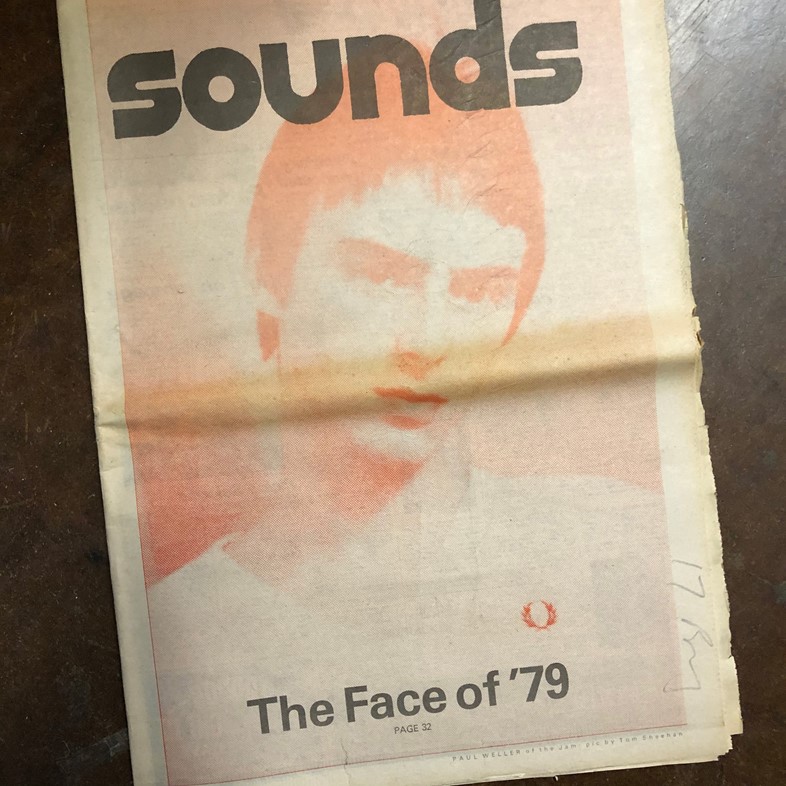
Mod: Sounds, September 22, 1979
“Let’s get it over with. What do you think of Mod? I just think it’s good that there’s lots of new bands, new blood, but all this, it doesn’t matter to me if they’re good or bad. At least somebody is having a go. Cynicism can really bog you down, and it got like that with me a while ago. That’s why I still think mod is good, though I actually think the term mod is a load of bollocks.” – Sounds, September 22, 1979
The face of ’79. Paul Weller, The Face of Mod. Photographed in signature Fred Perry and interviewed by Dave McCullough.
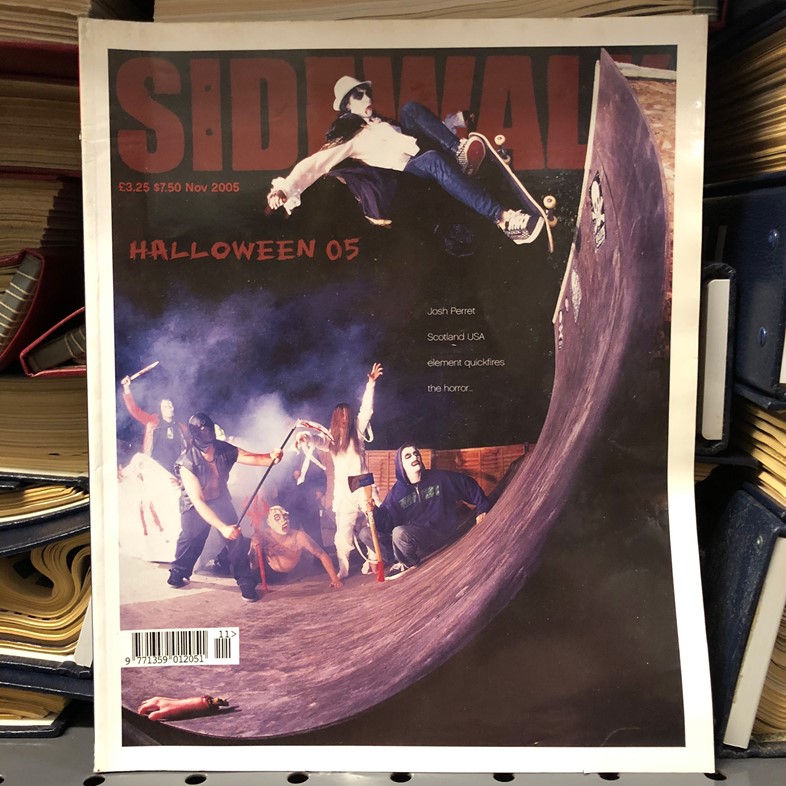
Skater: Sidewalk, November 2005
“The winner of the ultra fantastic cover comp is Styley, with his photo of horsey blunting the extension whilst escaping the zombies, mummies and dead stuff at the house of death.” – Sidewalk, November 2005
Skate bible Sidewalk takes Halloween to a whole new level with intricate detail of the photoshoots that took place for the zombie cover and editorials. Jam-packed with inside jokes with skaters who later went on to create Palace.
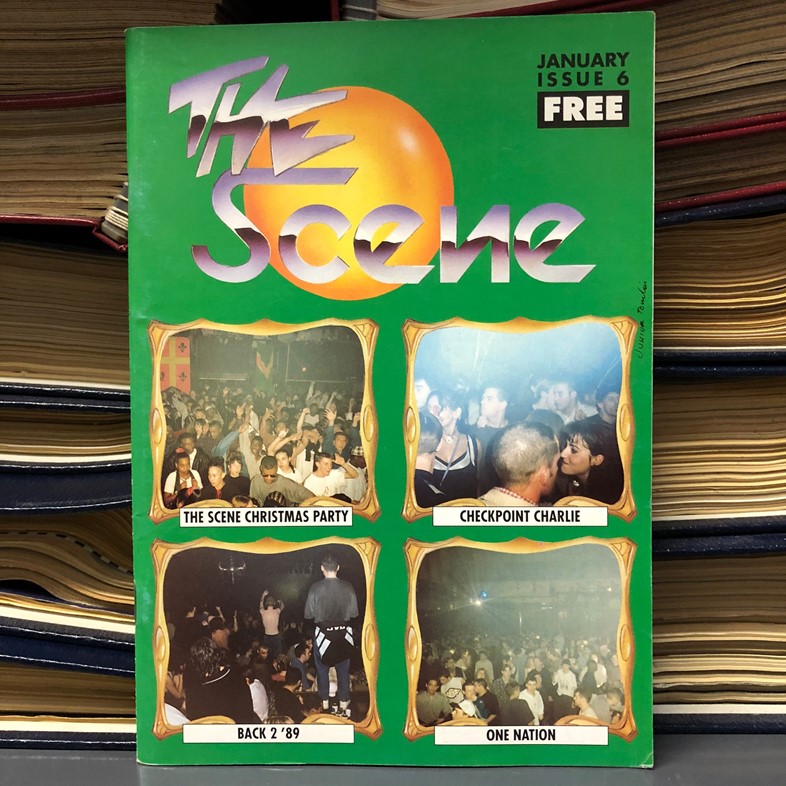
Club: The Scene, 1995
“Every year people say that house music is going to die – our opinion is it will never die, it will only change and progress. I first went raving in 1988 and around 1990 the same crap was being said! Now it’s 1995 and for the last seven years it’s still going strong! In our opinion, house music becoming commercial is a good thing, the people in the underground scene will disagree with this, the reason we think it’s good is because all the under 18s and over 18s hear the music on the television or on the radio! They like what they are hearing and therefore go to a continual flow of new people getting in the scene.” – The Scene, 1995
Only, a few years later, The Scene was already looking back to 1989, a symbolic year for ravers and acid house with nostalgia, and convincing readers that though it may no longer have seemed a secret, the heart and soul of house music continues to live on.
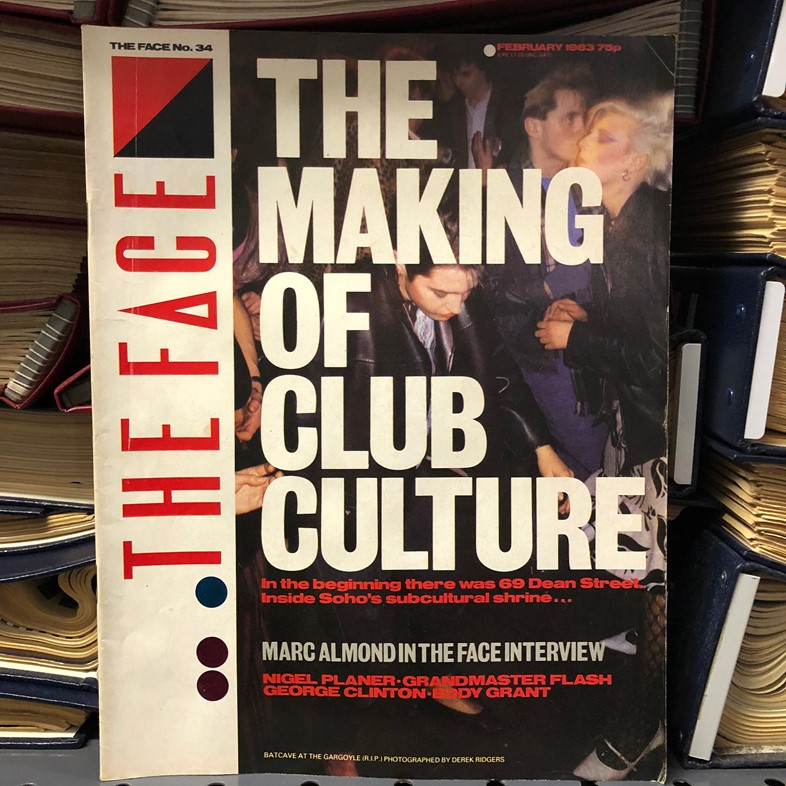
Club: The Face, February 1983
“In the beginning there was 69 Dean Street. Inside Soho’s subcultural shrine... 69 Dean Street is an address implanted somewhere in the folk memory of every Face reader. During the four years when the launch pad for musical experiment shifted from traditional gigs to the dancefloor, 69 Dean Street became a factory farm that has flattened each passing cult en route for today’s richly flavoured mainstream.” – The Face, February 1983
The Face was always at the forefront of culture, style and entertainment, throwing movements and artists in the limelight and, more often than not, deemed responsible for catapulting them to the ever-feared mainstream.
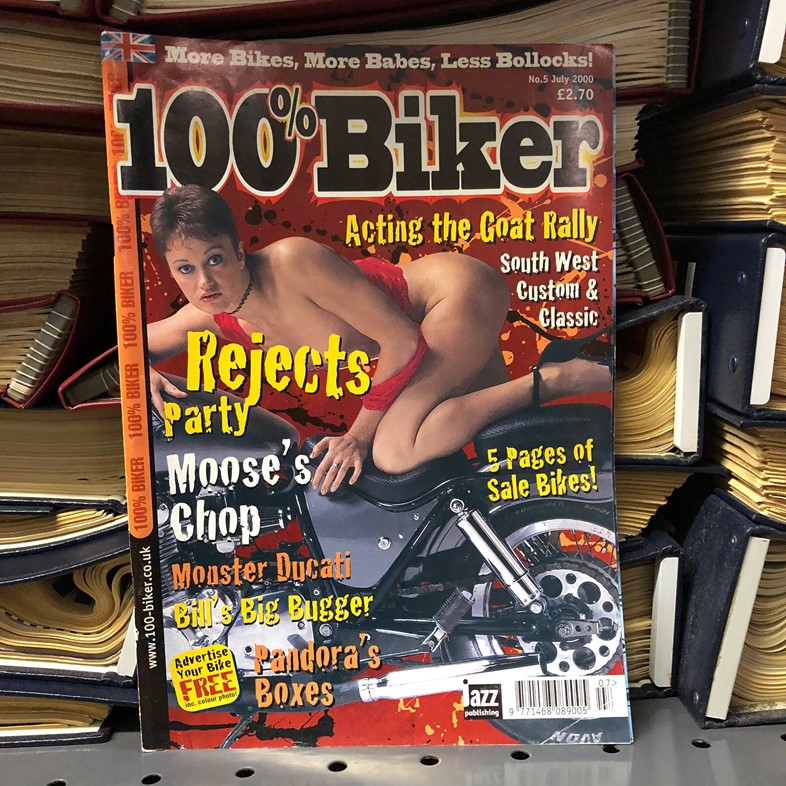
Bikers: 100% Biker, July 2000
“MORE BIKES, MORE BABES, LESS BOLLOCKS.” – 100% Biker, July 2000
Bikers united in these tasty pages filled with beautiful biker chicks artfully riding the latest bike sensation, a ‘Rogues Gallery’ with behind-the-scenes of bearded gentlemen at biker parties, ‘I <3 MOM’ tattoos on every other page, 100% merchandise and fan mail prompting outside readers to wonder how they ever got such a bad rep.
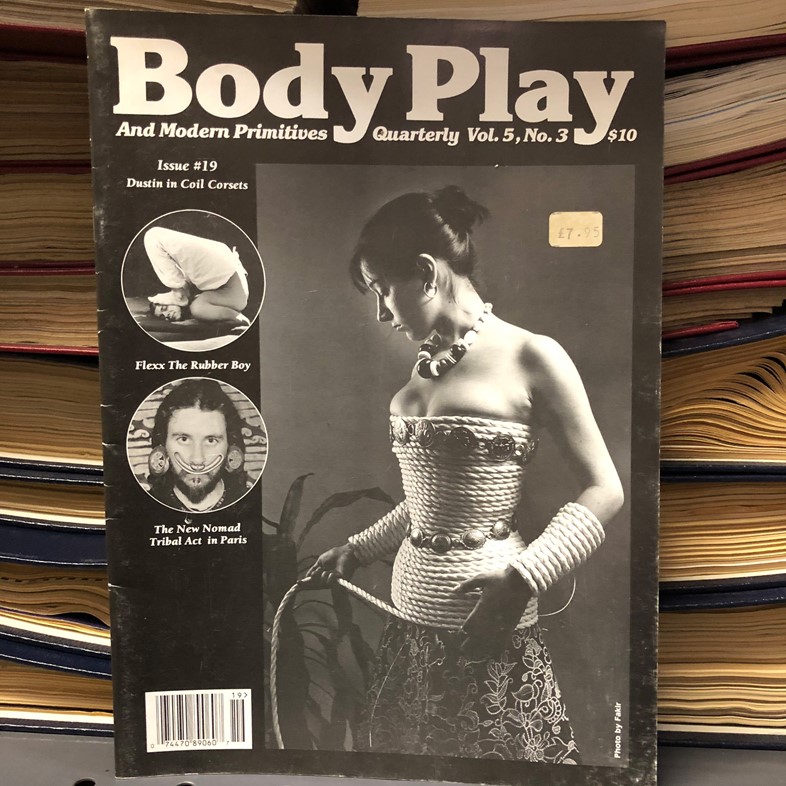
Fetish: Body Play and Modern Primitives, Vol. 5.3
Both publications are art pieces in themselves, with the culture of fetish making its way into high fashion at the speed of light, Body Art and Body Play and Modern Primitives are gentle reminders of the work, dedication and effort that goes behind the fascinating subculture of Fetish.
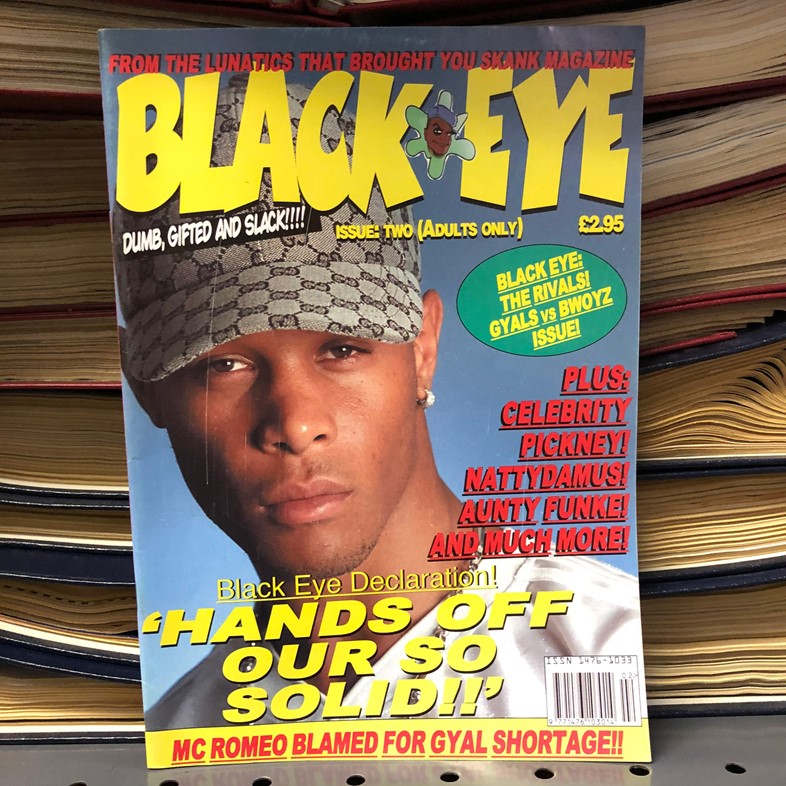
Garage: Black Eye, Issue 2
Garage star MC Romeo (blamed for gyal shortage) on the cover of Gyalz vs. Bwoyz issue of Black Eye, “from the lunatics that brought you Skank Magazine”, a tongue-in-cheek, lingo-packed holy writ for die-hard garage fans.

Rockabilly: NME, February 1980
“For 30 years, country music gave birth to a series of musical crossbreeds through an on again, off again illicit relationship with black blues and jazz. In 1954, Elvis Presley delivered the strangest and meanest mutt of them all: rockabilly. Like a grubby mongrel tormented by fleas, the reckless gentre of rockabilly attracted hordes of hillbillies. Countless grits let their sideburns blossom and their libidos roam, surrendering themselves to the intoxication of absolute chaos – hiccups, stutters, gasps, shudders, and ultimately, quivers down the backbone of lust. To the poor Southern white, rockabilly meant emotional license. Freed from the strait jacket of manners (mom and modesty were the new curricula), the rockabilly found a new home in a mental ward called temporary psychosis, hillbilly-style. For three years, 1955–57, that ward was packed.” – NME, February 1980
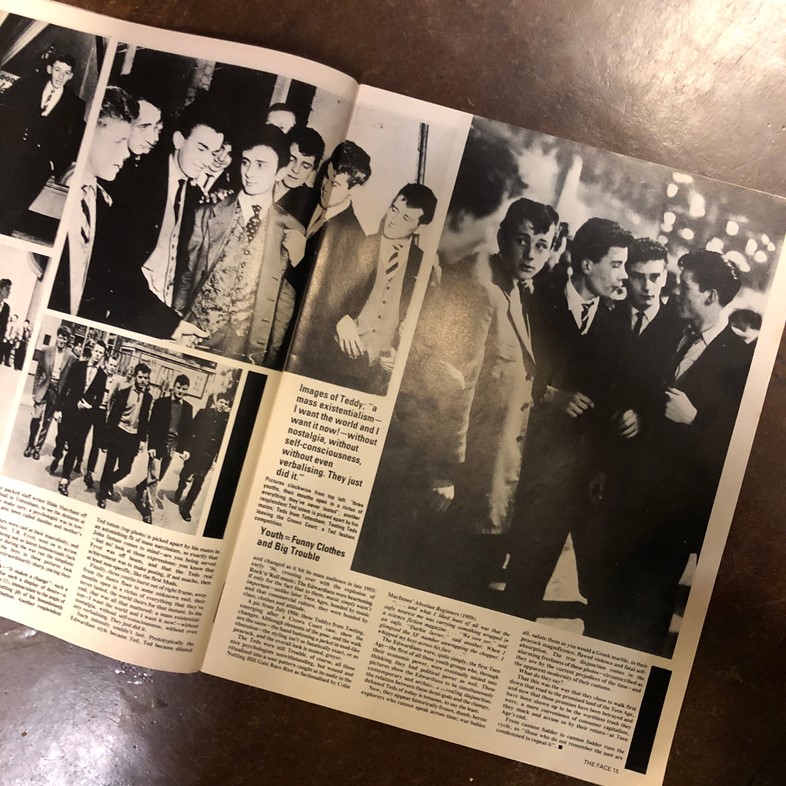
Teds: The Face, June 1982
“During their research for the first chapter of Teenage, producer Geoff Moore, director Julien Temple, presenter Peter York and researcher Jon Savage unearthed new facts and photographs of the original Teds discovered for the past 30-odd years. The Teds were “the first to walk down that road to the promised land of teen age,” and, writes Savage, their image is now a timely reminder of how those promises have turned out to be “worthless trash [...] The overwhelming impression is of life, of movement, of desire – of people let out of a cage. The poses, the expressions are by now quite familiar, trite even: they have already entered a common language. But, consider the dates: mid 1953 to mid 1954. These boys are from a different age, not only temporal – but cultural. They don’t think like we do. They have nothing to take for granted, explorers in virgin territory. Theirs is a blank cheque, a carte blanche: the first working-class boys to dress, quite literally, like aristocrats and, in so doing, to being aristocrats.” – The Face, June 1982

Ska: i-D, June 1989
“Ten months ago i-D highlighted the growing ska scene and the new breed of skinheads. Since then ska has become so popular that everybody from homeboys to west end clubbers have jumped on the train to skaville, as people like Longsy D and MC Kelz fuse ska with house and hip-hop’ with i-D staff later developing into ‘how ska fashion is adapting to the 90s and witnessing the birth of the another subculture: the Ya-Yas.’” – i-D, June 1989
Streetstyle: From Teddy Boys to Grime Kids is at Trinity Art Gallery, London, until December 7, 2019.















